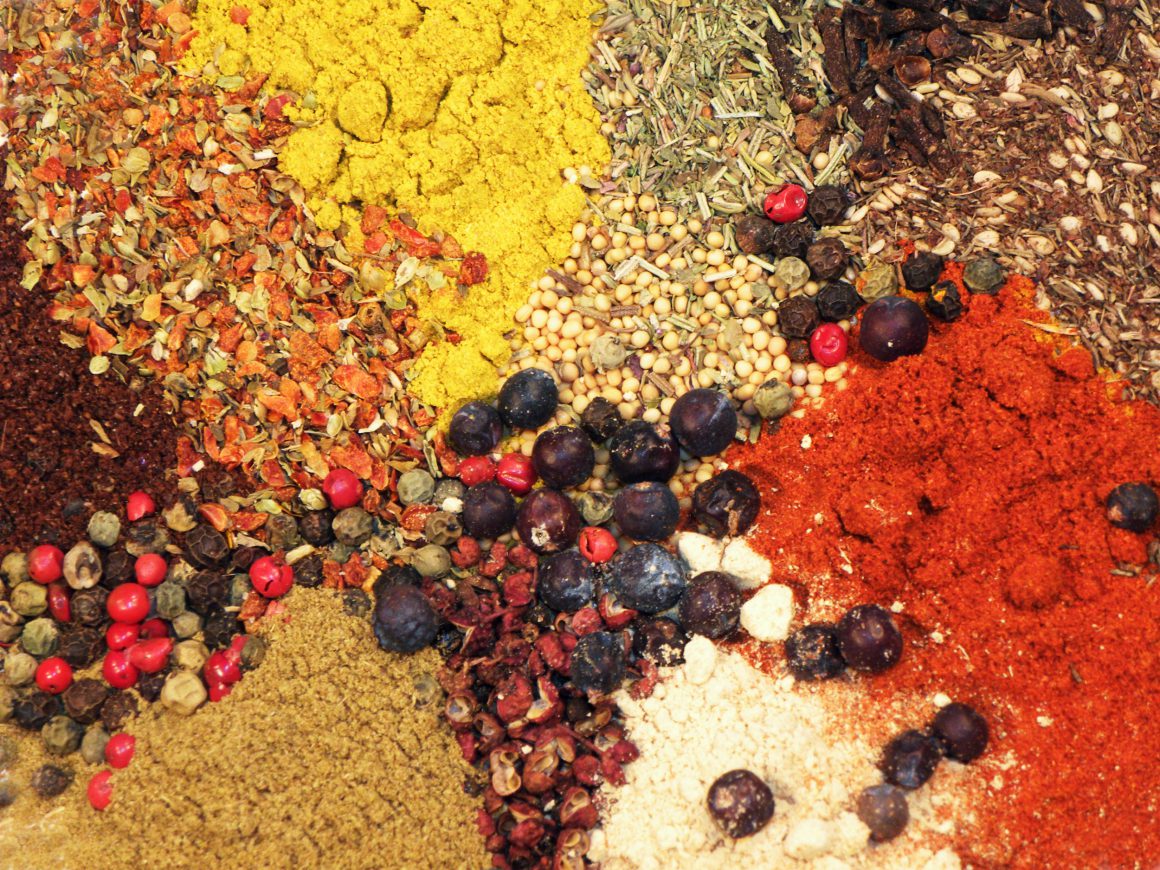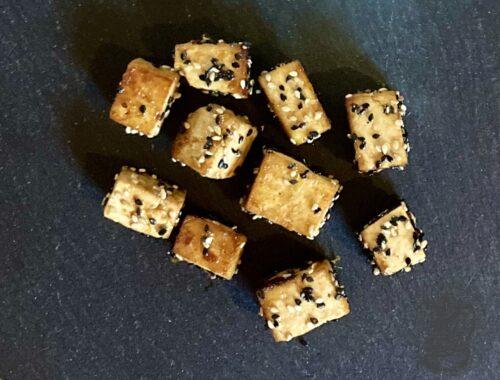
Tips for spice combinations
Do you ever wonder which spice goes with which dish?
This table shows you clearly where you can use which spice.
On four A4 pages, you can quickly and easily find the combination of 48 spices and 20 food categories.
The table also has space for your own notes.
The table costs 2.50 Euro and after the purchase, you will get it directly by e-mail as a PDF to download and print.
Which spices go together – and which don’t go together at all?

Often my customers ask me this question, and the answer, as always, is not quite clear.
Like so many things, it’s also a matter of taste. Besides, in different countries, spices are combined and used differently. Often also because certain spices are available in certain countries and not in others.
In Europe and America, for example, cinnamon is used almost exclusively for sweet dishes. In the Orient, on the other hand, it is a popular spice also for savory food.
In the North African countries, flowers and herbs are often used for savory dishes. For example, rose petals, orange blossoms, and nana mint are commonly used.
Often spices that have a similar taste are used in the same dish. This means that warm spices are used together, and the same goes for fresh ones.
But sometimes it is a special taste experience when fresh cardamom is mixed with the warm, enveloping long pepper that tastes a bit like wood.
Spices are sometimes also combined with each other according to health aspects, for example in Ayurvedic cuisine. But I like to leave this subject to someone who understands more about it than I do.
Here I try to give you a little guide
But my combinations are by no means the only valid ones. It is still best to try different ones and then decide for yourself whether it tastes good or not.
Spices that can be combined with (almost) all other spices:
- Pepper: all colours (black, white, green, red, but only the real one)
- Cubeb pepper: tastes similar to pepper, but fresher
- Meleguetta: tastes similar to pepper, although it is not the same thing
- Peperoncino: goes with everything and on everything
- Coriander seeds: in small quantities
- Turmeric: is often the basis of spice mixtures
- Paprika: is also a basic spice
- Ginger: sometimes warm, sometimes fresh it is suitable for many things
- Fenugreek seeds: reminiscent of bouillon and nuts
- Mustard seeds: are rather fine in taste and therefore do not disturb anywhere
- Sesame seeds: have almost no taste of their own
- Asafetida: because it replaces garlic and onion (except for “sweet” spices)
Spices that harmonize particularly well with each other because they are similar:
Fresh, sweet spices:
dill, anise, fennel, star anise, caraway

Fresh, lemony spices:
green cardamom, Sechuan pepper, ginger (fresh), kaffir lime, lemongrass, green pepper, Tasmanian pepper, sumac, tamarind

Warm spices:
Ajowan, cinnamon, black cardamom, cloves, cumin, galangal, mace, nutmeg, long pepper, allspice, ginger (dried)

“Sweet” spices:
cinnamon buds, cassia-cinnamon, cinnamon, galangal, allspice, vanilla, saffron

These spices, which harmonize well with each other, can also be a bit boring if no others are used in a certain dish
Most of the time a meal tastes better if it offers different taste experiences. So in a fresh dish, a warm note, or in a warm dish a touch of sweetness could go very well.
In the different countries’ cuisines, this contrast is often lived out and the food is therefore particularly tasty.
Classic spice combinations in Indian cuisine:
turmeric, coriander, fenugreek seeds, cumin, chili, pepper, ginger, cloves, cardamom (green and black), cinnamon, curry leaves, nutmeg, mace, ajowan, mustard seeds, galangal, curry leaves, (asafetida)

Classic spice combinations in Arabic cuisine:
Pepper, long pepper, cubeb pepper, ginger, cumin, coriander, chili, cloves, cinnamon, thyme, cardamom, rose petals, allspice, paprika, orange blossom, rosemary, nana mint

Classic spice combinations in Chinese cuisine:
star anise, fennel, cinnamon, Sichuan pepper, cloves

Classic spice combinations in Asian cuisine (Indonesia, Thailand):
chili, coriander leaves, tamarind, sugar, garlic, shrimps, peanuts, kaffir limes, lemongrass, lime peel, turmeric, ginger

Classic spice combinations in the European cuisine (for sweets):
allspice, cloves, cardamom, star anise, aniseed, fennel, poppy seeds, mace, nutmeg, ginger, cinnamon, coriander seeds
And what doesn’t fit together at all?
There are only a few spices that, when mixed together, make a dish inedible. As I said before, a lot is also a matter of taste.
Here are examples of spices that are difficult to mix with others:
Star anise:
very distinctive, fresh taste. Not particularly suitable with lemony spices like kaffir lime, lemongrass, or sumac
Cassia cinnamon:
$There are different varieties of cassia cinnamon, especially the Vietnamese one is a sweet spice and is not suitable for savory dishes. However, there is also less sweet cassia cinnamon.
has a very unique taste and is not particularly suitable in combination with warm spices such as cumin, ginger, or galangal.
Asafetida:
tastes strongly of garlic and onions and is less suitable for “sweet” spices
Juniper:
combines better with warm spices and less well with lemon-fresh.
can actually be combined with anything, but it’s a pity if it is drowned out by strong spices.

One more little tip:
It’s easier to try out different spices on neutral foods. Rice or other cereals are best suited for this. There are endless possibilities to season rice and it always tastes good.
If you are not yet familiar with the different spices, I recommend not mixing too many of them. It’s better to mix only two or three, and if you like the result, you can try something else next time.
The most important thing is to simply be brave!
If you have any questions, just write them in the commentary, then I will be happy to help you!







